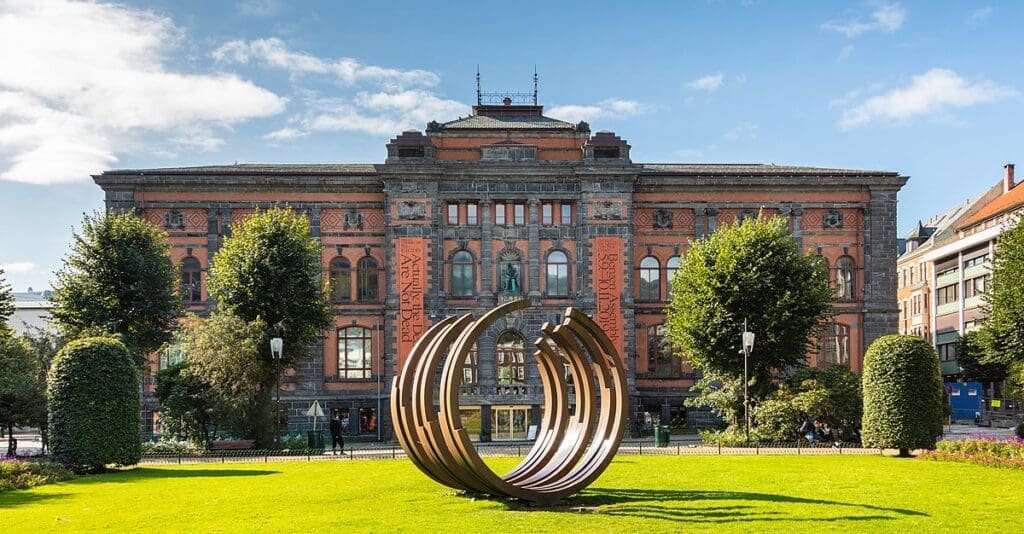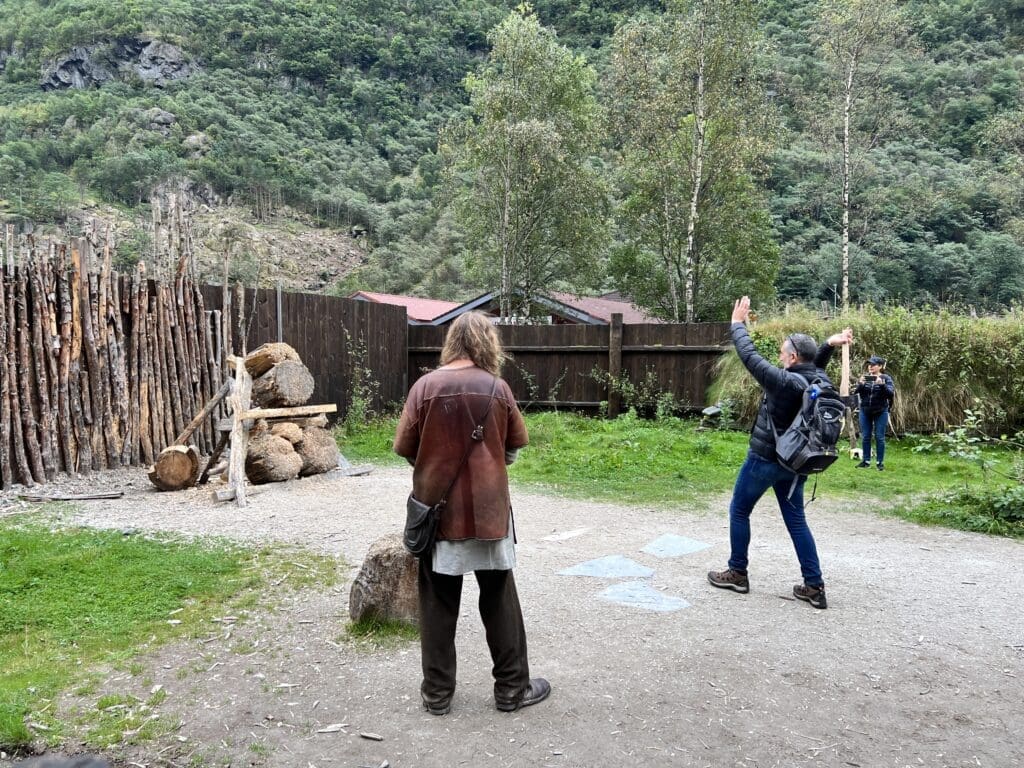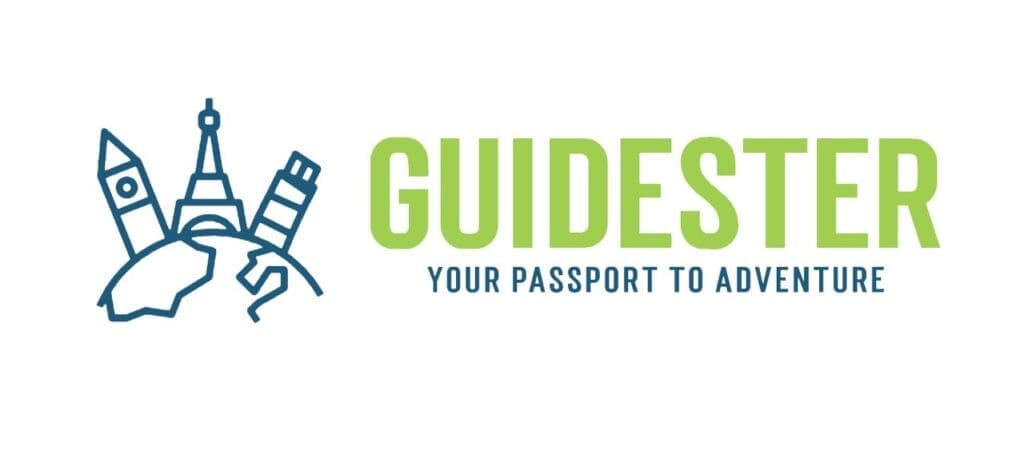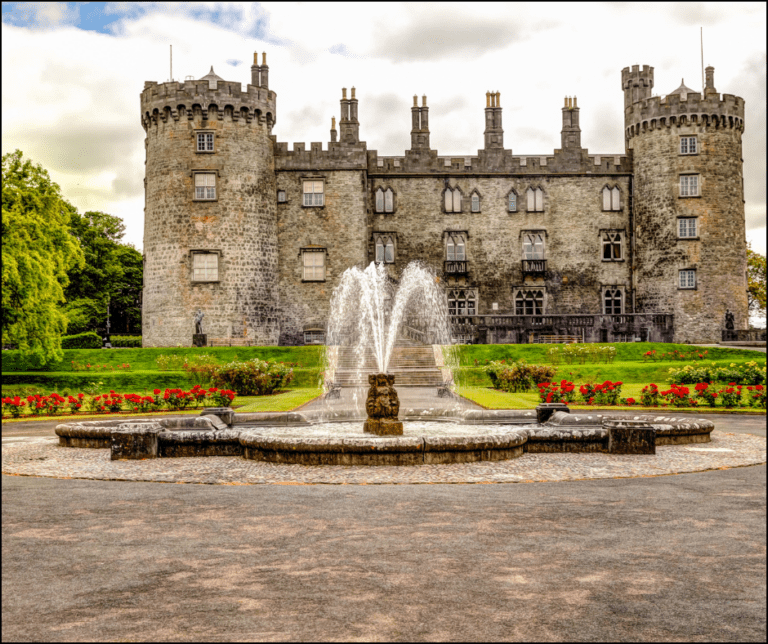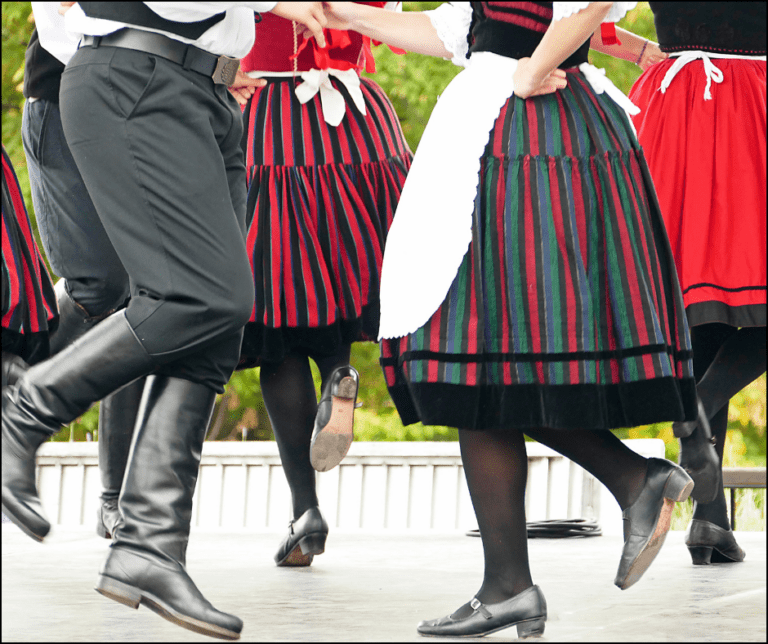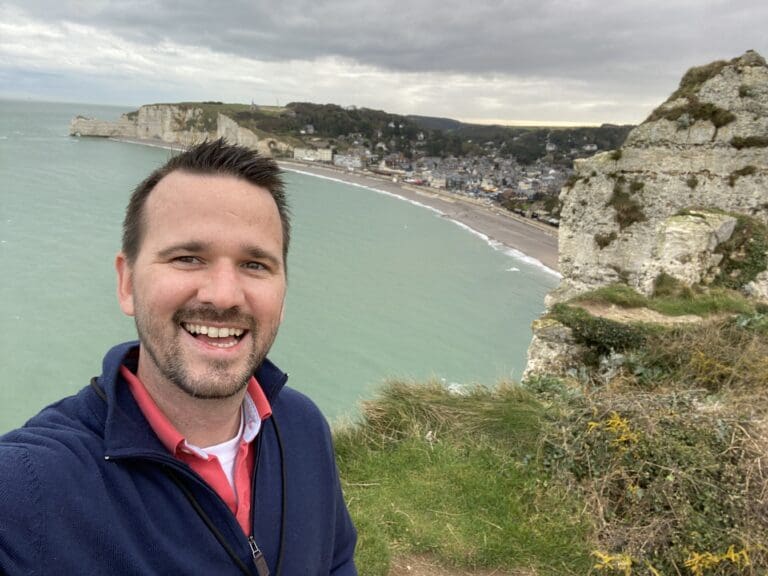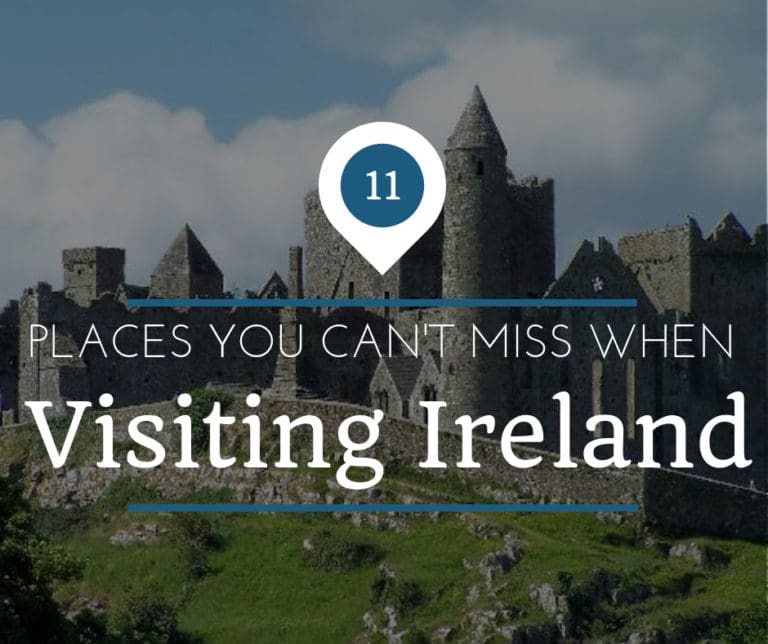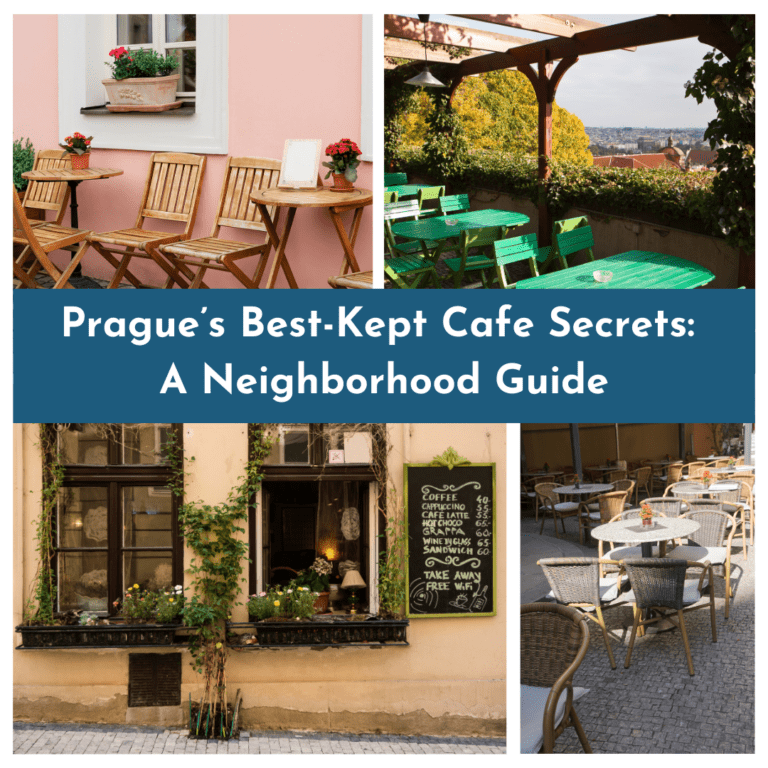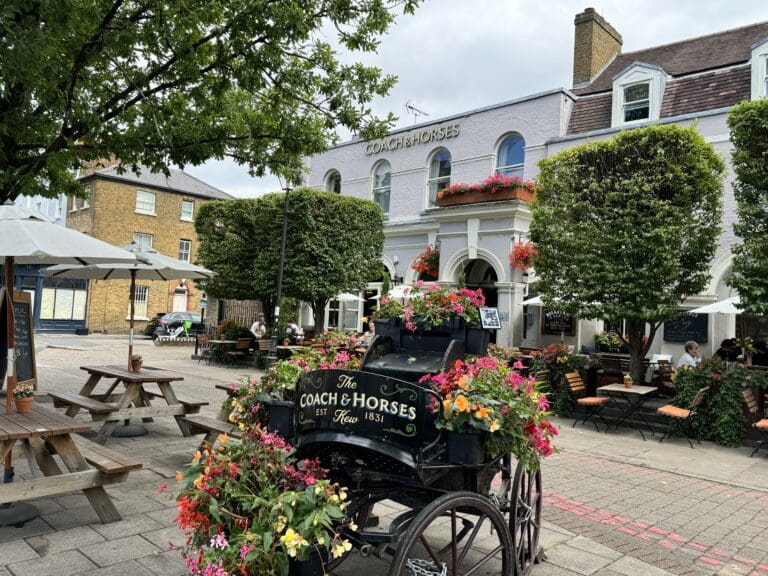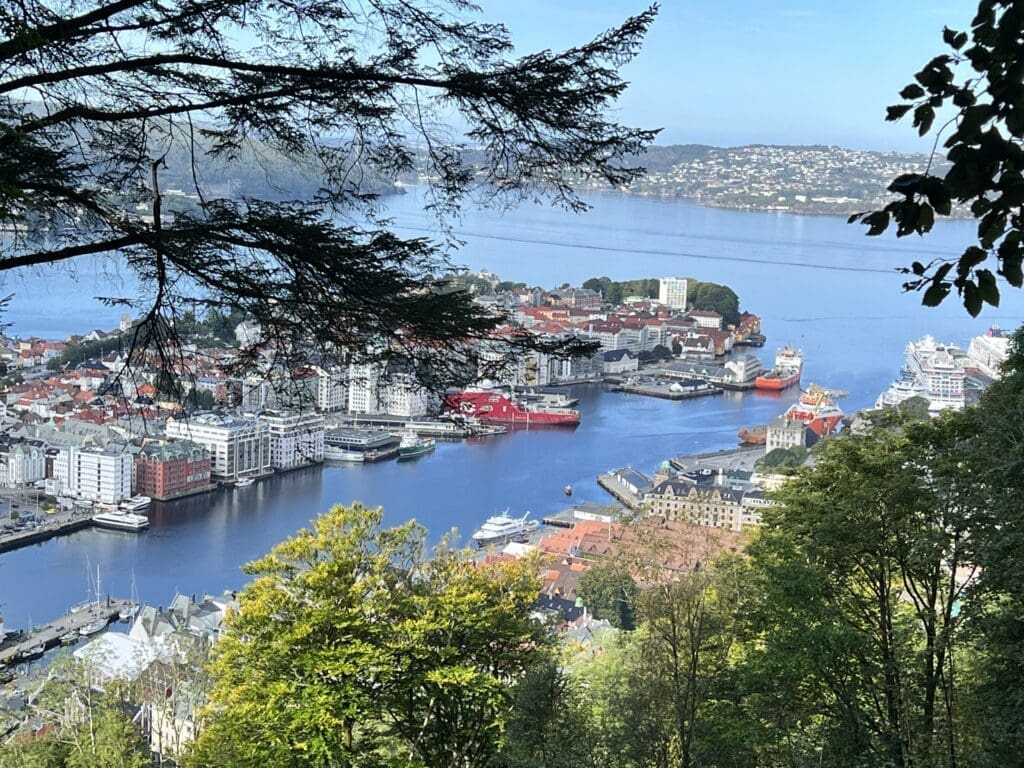
Bergen was the very first place I visited in Norway, and I’m happy it was. The city captures the essence of Norway’s beauty, from its breathtaking fjords to its lively cultural scene and delectable food. Bergen is not just a city; it’s a gateway to unforgettable adventures.
Norway’s second-largest city is known for its history, culture, and as the gateway to the fjords, making it a must-visit destination for travelers who seek quality experiences in Northern Europe.
Getting to Know Bergen
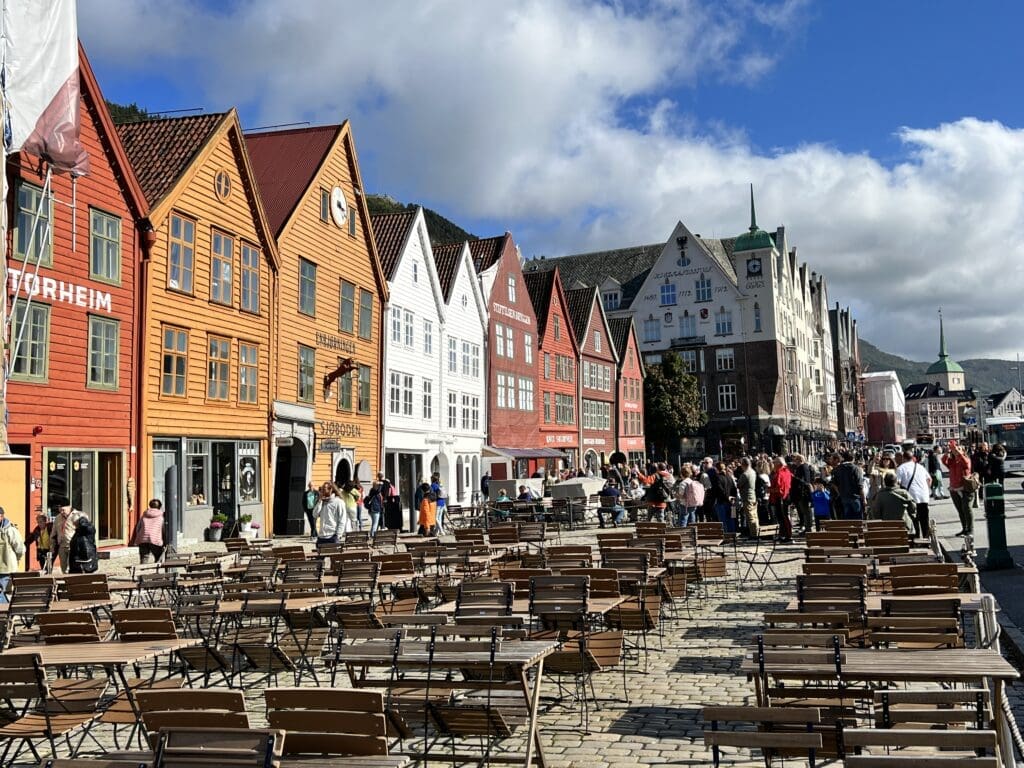
Bergen, often referred to as the gateway to the fjords, is a city steeped in rich maritime history and cultural depth, making it one of Norway’s most pivotal cities since its foundation in 1070.
Initially established as a trading hub on the old Norse trading route, Bergen rapidly became a vital link in maritime commerce across Europe, particularly as part of the Hanseatic League from the 14th to the mid-17th century.
This era left a lasting imprint on the city, most visibly through the iconic Bryggen Wharf, a UNESCO World Heritage site featuring colorful wooden merchant buildings that have become symbols of Bergen’s historical significance.
Beyond its commercial legacy, Bergen has been a cradle of culture in Norway for generations. This is the birthplace of renowned composer Edvard Grieg, whose work continues to influence the global music scene, encapsulating the Norwegian spirit.
The city also boasts a vibrant arts scene, home to one of Norway’s oldest orchestras, the Bergen Philharmonic Orchestra, founded in 1765, and numerous galleries and theater groups, contributing to a rich cultural tapestry.
This blend of historical maritime importance and a deep-rooted cultural scene makes the city an epicenter of tourism in Norway, drawing visitors from all over the world.
Must-See Attractions in Bergen
Bergen is a treasure trove of sights, from the historic Bryggen Hanseatic Wharf to the serene views atop Mount Fløyen.
Dive into the vibrant Fish Market or take a reflective moment at St. Mary’s Church. Each site tells part of Bergen’s rich story!
1. Bryggen Hanseatic Wharf
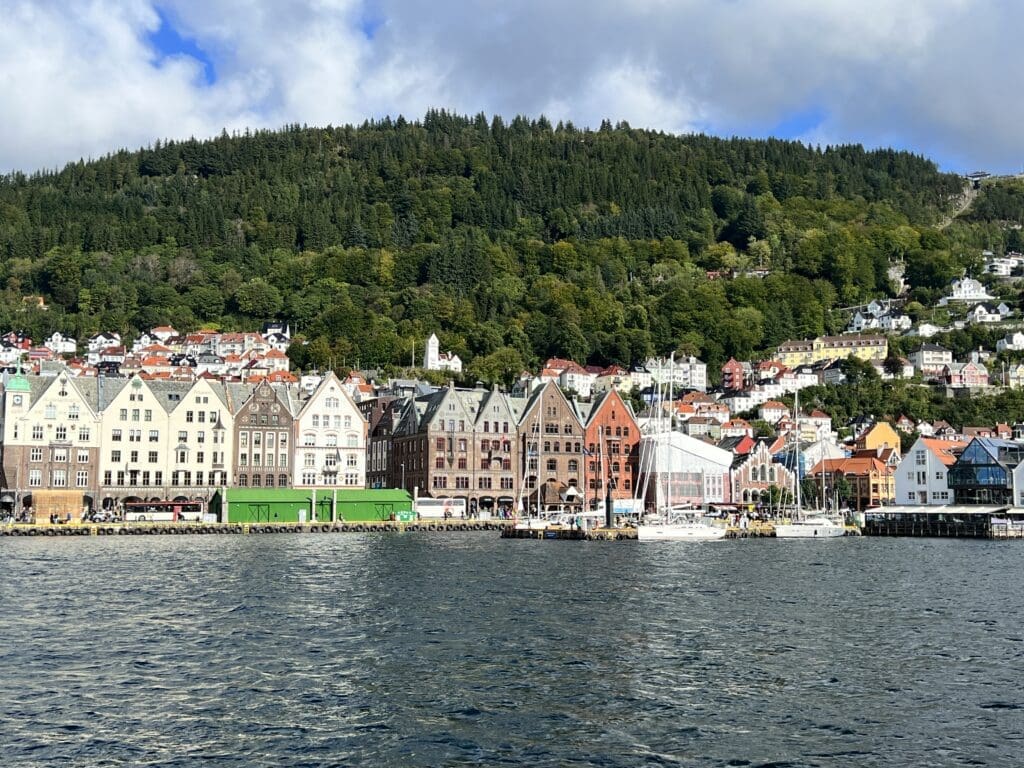
A UNESCO World Heritage site, Bryggen is the historical heart of Bergen. These colorful wooden merchant buildings, dating back to the Hanseatic League’s trading empire in the 14th century, are a testament to Bergen’s significance in maritime commerce.
Stroll through the narrow alleyways, explore the quaint shops, and visit the Bryggen Museum to dive deep into the area’s history.
2. Bergenhus Fortress
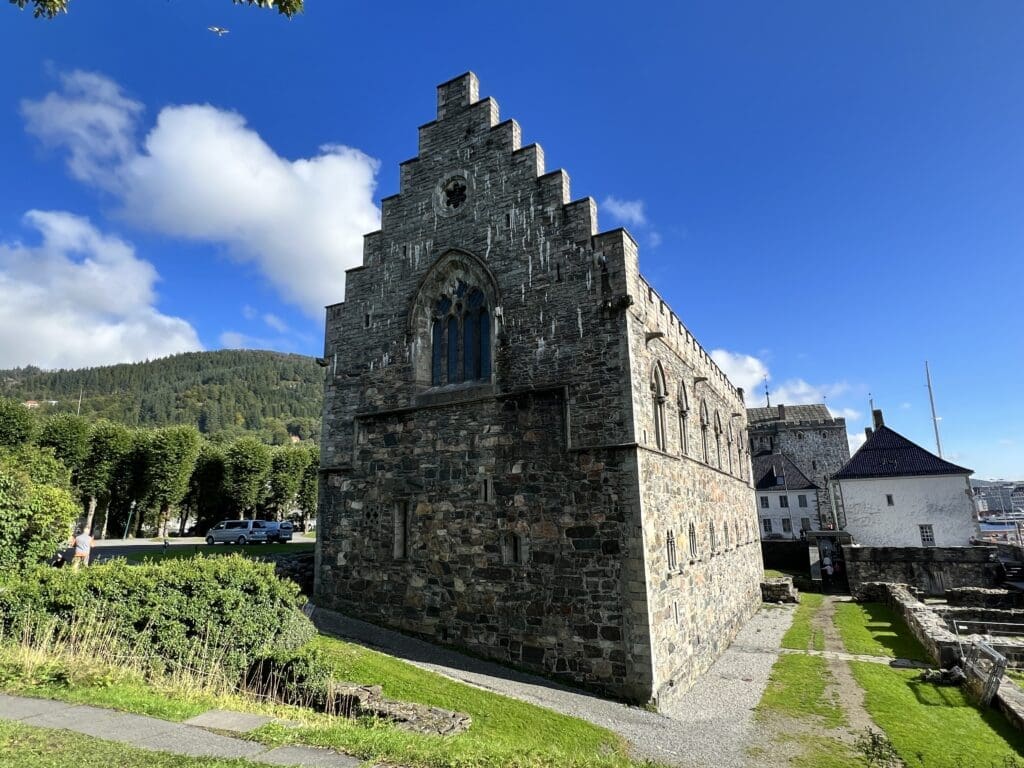
Situated at the entrance of Bergen harbor, Bergenhus Fortress is one of Norway’s oldest and best-preserved fortifications. The fortress area includes the Rosenkrantz Tower and Håkon’s Hall, both rich in medieval history.
Take a guided tour to learn about the fortress’s strategic significance through the centuries.
3. The Fish Market (Torget)
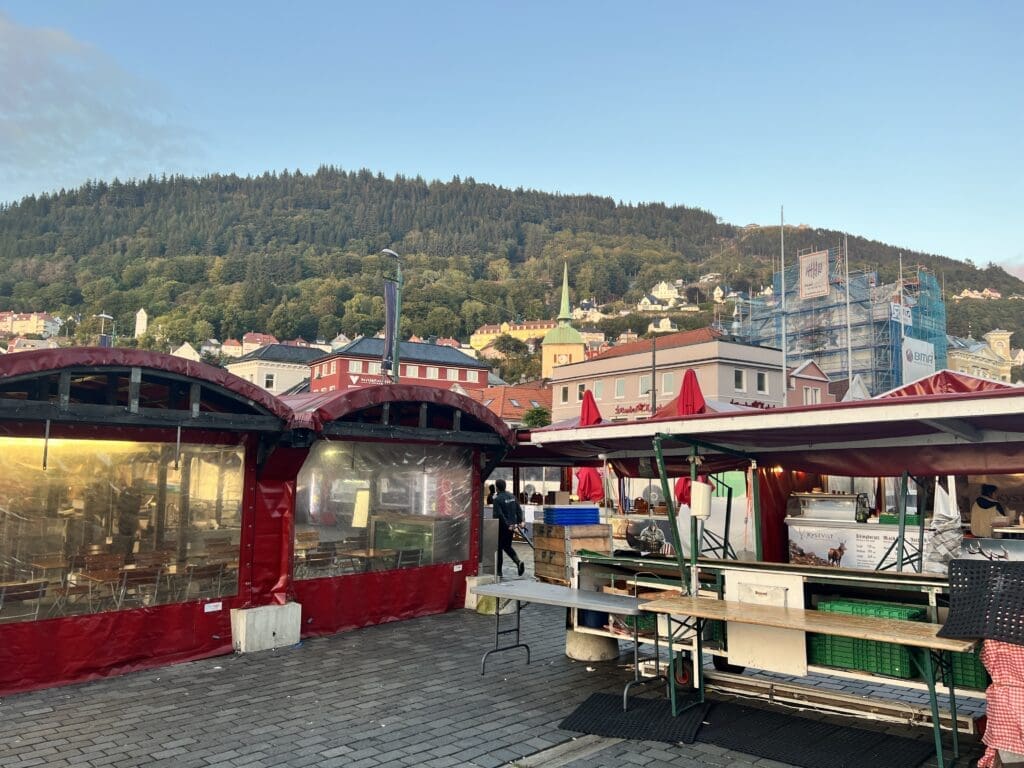
Bergen’s Fish Market, located in the heart of the city, is a bustling hub of activity. It’s not just a place to buy fresh seafood; it’s an experience.
Here, you can sample local delicacies like salmon, king crab, and various traditional Norwegian foods. The market also offers a selection of fruits, vegetables, flowers, and handicrafts.
4. Fløibanen Funicular to Mount Fløyen
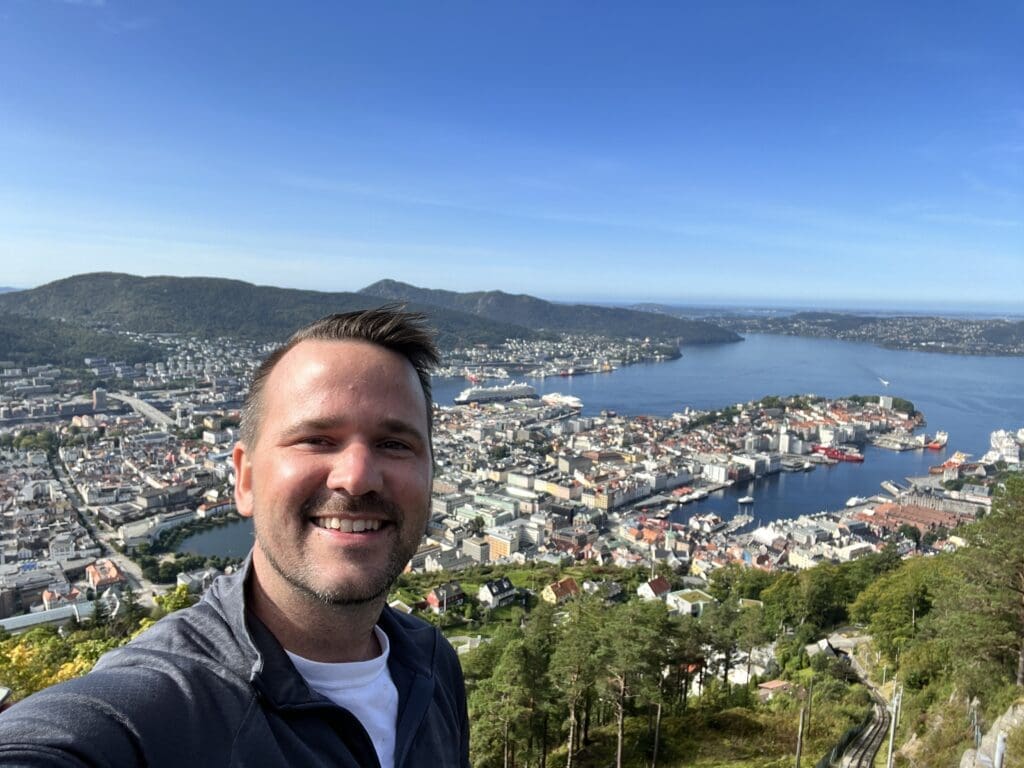
For the best views of Bergen and its surroundings, take the Fløibanen funicular to the top of Mount Fløyen.
The ride up offers breathtaking vistas, and once at the summit, you can enjoy panoramic views of the city, the surrounding mountains, and fjords. There are also numerous hiking trails for all levels, a children’s playground, and a café to relax in.
5. KODE Art Museums and Composer Homes
KODE is a collection of four art museums located in the city center, housing one of Scandinavia’s largest collections of art, design, and music.
The museums display works ranging from classical paintings to contemporary art, including pieces by Edvard Munch and Nikolai Astrup. KODE also manages the homes of composers Edvard Grieg, Ole Bull, and Harald Sæverud, which are open to the public.
6. Troldhaugen – Edvard Grieg Museum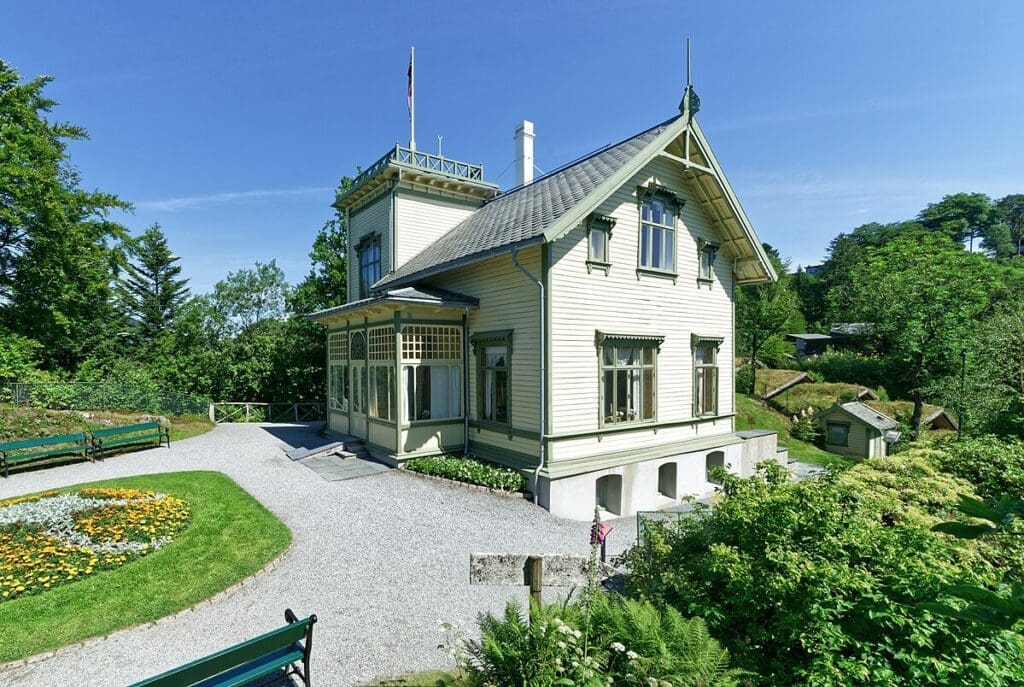
The home of Norway’s most famous composer, Edvard Grieg, is now a museum dedicated to his life and work.
Located about 20 minutes from the city center, Troldhaugen includes Grieg’s villa, his composing hut, and the family’s burial site. The museum offers insights into Grieg’s musical contributions and the inspirations he drew from the Norwegian landscape.
7. Norwegian Fisheries Museum
Housed in old wharfside warehouses, the Norwegian Fisheries Museum tells the fascinating story of Norway’s fishing heritage and coastal culture.
Interactive exhibits and authentic artifacts offer a deep dive into the life of Norwegian fishermen and the importance of the sea to Norway’s history and economy.
—> Read More: 7 Otherworldly Sites To Visit In Norway
8. Ulriken Cable Car
For another spectacular view of Bergen, take the Ulriken cable car to the highest of Bergen’s seven mountains.
The cable car ride offers stunning views of the city, fjords, and mountains. At the top, you can enjoy hiking trails or simply relax at the mountain-top restaurant.
9. St. Mary’s Church (Mariakirken)
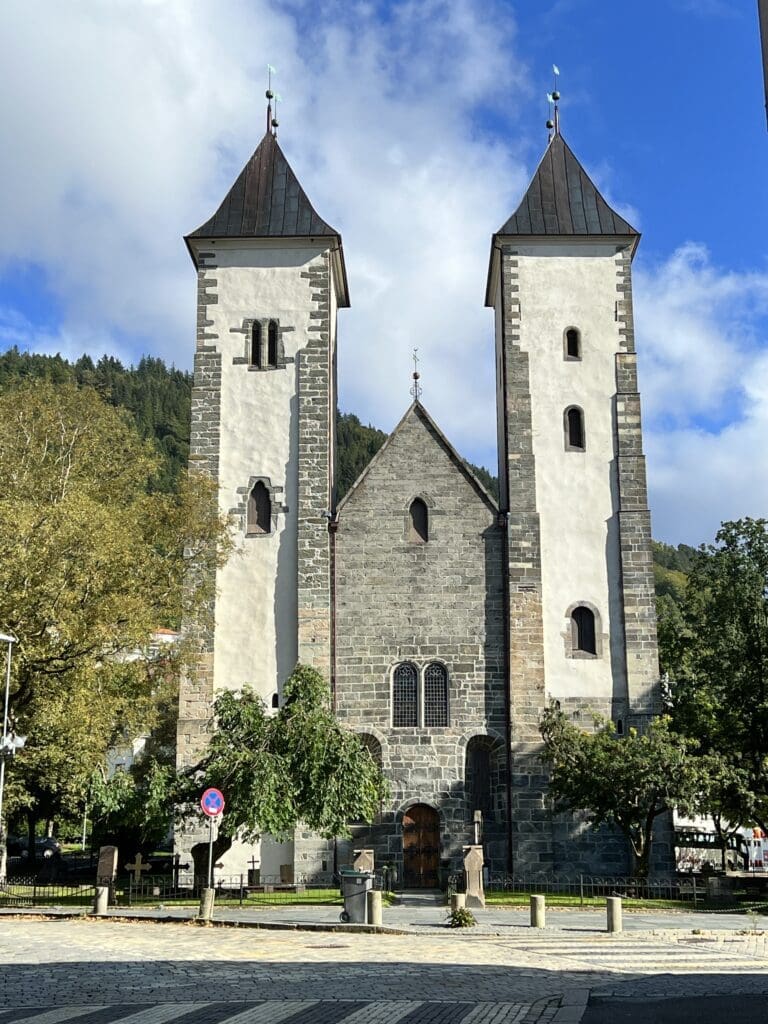
St. Mary’s Church, located in the heart of Bergen, is the oldest building in Bergen and a testament to the city’s medieval past.
Often overshadowed by the more prominent Bergen Cathedral, St. Mary’s offers a quiet and reflective space, with remarkable architecture and beautiful, well-preserved interiors that date back to the 12th century. Its significance to Bergen’s history and the serene ambiance it provides make it a must-visit for those interested in the spiritual heritage of Norway.
10. Sandviken Battery
A little-known historical site, the Sandviken Battery (Sandviksbatteriet), offers a unique glimpse into Bergen’s military history.
Built in the early 19th century to defend against naval attacks, today it stands as a secluded reminder of the past, offering panoramic views of the city and the surrounding areas. It’s a perfect spot for those looking to explore Bergen’s history in depth, away from the crowds.
Dining Out: Best Places To Eat in Bergen

Bergen’s dining scene is a feast for the senses, offering everything from Michelin-starred restaurants to cozy, traditional eateries. Indulge in the freshest seafood right from the fjords, and don’t miss the chance to try local delicacies at the bustling Fish Market.
Bare Restaurant
Situated in the opulent Bergen Børs Hotel, Bare Restaurant is at the forefront of the Nordic culinary scene, featuring dishes meticulously prepared using local, seasonal ingredients. Its dedication to sustainability and innovation has earned it a Michelin star, making it a must-visit for food enthusiasts.
Lysverket
Lysverket, known for its focus on seafood and contemporary Nordic dishes, doubles as a cocktail bar located adjacent to the KODE art museums, making it a perfect spot for both culture and cuisine. Lysverket is celebrated for its creative use of local ingredients and its modern, stylish ambiance.
Colonialen
Colonialen operates several venues across Bergen, including a restaurant, bakery, and cafe. The restaurant, known for its refined yet cozy atmosphere, offers a menu that combines Norwegian culinary traditions with global influences, emphasizing quality and innovation.
Enhjørningen
Located along the historic Bryggen wharf, Enhjørningen (The Unicorn) offers a dive into traditional Norwegian seafood cuisine. The restaurant, with its classic maritime decor, provides a dining experience steeped in Bergen’s fishing heritage.
Bryggeloftet & Stuene
Also on Bryggen, Bryggeloftet & Stuene is famed for its authentic Norwegian dishes, offering a cozy, traditional setting. It’s a great place to sample local classics like Bergen fish soup, reindeer, and other Norwegian specialties.
To Kokker
To Kokker is a charming restaurant offering an intimate dining experience with a focus on traditional Norwegian cuisine. Located in an old Bergen house, it provides a menu that blends classic recipes with contemporary culinary techniques.
Munken Bistro
For those seeking a more casual dining experience without sacrificing quality, Munken Bistro offers a fusion of Norwegian and international cuisines, with a particular focus on tapas-style dishes. It’s known for its relaxed atmosphere and friendly service.
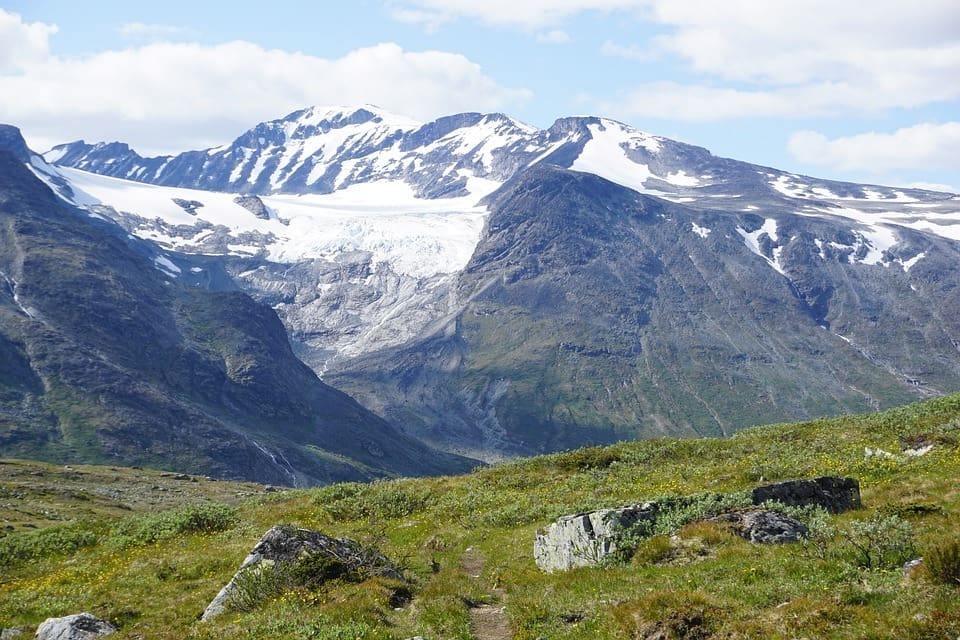
Planning a Trip To Norway?
We can help create your perfect itinerary!
- Worried you'll miss the hidden gems?
- How long should you stay in each place?
- What should you see and what to avoid?
- Should you rent a car, train it, or both?
Travel Tips To Bergen
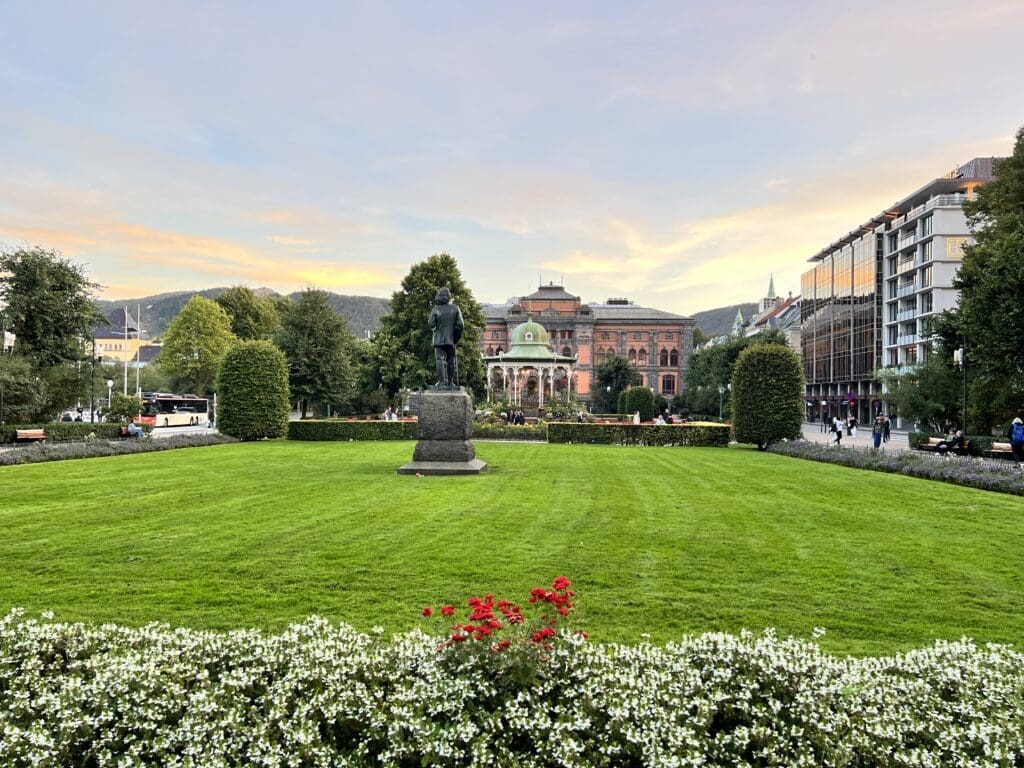
Bergen is tucked between seven mountains on Norway’s west coast and is famous for its rainy weather. But, don’t let the rain fool you; it’s what makes the city so green and gives it a special kind of beauty, especially when the mist rolls in.
It’s like stepping into a fairy tale. Plus, the people in Bergen are super friendly. They’re known for being open and warm, making everyone feel welcome. So, even on the rainiest days, the smiles of the locals will brighten your visit.
The best times to visit Bergen largely depend on what you’re looking for in your trip, but generally, the period between May and September offers the most favorable weather and the full range of Bergen’s attractions.
During these months, you’ll enjoy longer daylight hours, milder temperatures, and the city’s lush landscapes in full bloom.
May to September: This is peak tourist season in Bergen due to the warmer weather, with temperatures ranging from 10°C to 20°C (50°F to 68°F). It’s the perfect time for outdoor activities like hiking the surrounding mountains or exploring the fjords.
The city also buzzes with festivals and events, including the Bergen International Festival in late May and early June, offering rich cultural experiences. However, this is also when Bergen sees the most visitors, so expect higher prices and more crowded attractions.
June to August: These are the warmest months, ideal for those looking to maximize their outdoor exploration. It’s also when Bergen experiences its longest days, with nearly 24 hours of daylight, giving you more time to enjoy the city. Keep in mind, though, that July can be particularly rainy, even in the summer.
Off-Peak Seasons (March-April and October-November): For those looking to avoid the crowds and don’t mind a bit of rain and cooler temperatures, the shoulder seasons can be a great time to visit. You’ll find lower accommodation prices, and the city’s attractions will be less crowded. The spring months bring the bloom of flowers, while autumn showcases the beautiful fall foliage.
Bergen’s weather adds to its charm, painting the city in vibrant greens thanks to the frequent rain. Embrace the misty mornings and sunny afternoons by packing layers – a waterproof jacket, breathable clothes, and sturdy walking shoes. This way, you’re prepared for anything Bergen’s climate offers.
—> Read More: The Best Hiking in Norway
Navigating the City
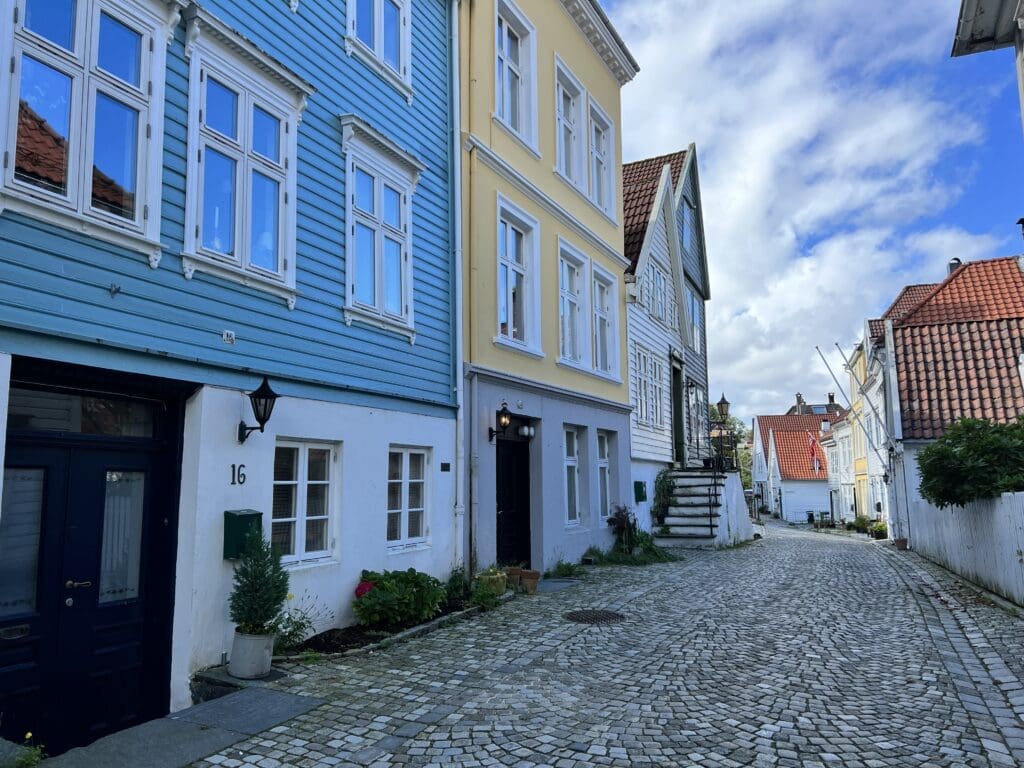
Getting around Bergen couldn’t be easier. With an array of public transport options and the handy Bergen Card, you’re all set to explore every nook and cranny of this picturesque city on your own terms.
Public Transit: Bergen’s public transport network includes buses, light rail (Bybanen), and even boats, making it easy to reach both city attractions and nearby fjords. For tourists, one of the best investments is the
Bergen Card. This card offers travel on all public transportation within the city, including buses and the light rail, as well as free or discounted admission to many museums, attractions, and even some parking facilities. It’s available in 24, 48, or 72-hour increments, catering to different lengths of stay.
Walking: Bergen’s city center is compact and pedestrian-friendly, with many of the main attractions like Bryggen, the Fish Market, and Mount Fløyen’s funicular within easy walking distance of each other. Walking not only offers a more intimate view of the city’s charm but also allows for delightful detours down alleyways and hidden streets not accessible by public transport.
Biking: For those who prefer pedaling, Bergen offers several bike rental options, including Bergen City Bike, which has many docking stations around the city. Biking is an excellent way to cover more ground while enjoying Bergen’s scenic routes, especially along the waterfront and around the lakes.
Using Local Transit: For longer distances or when heading to attractions outside the city center, Bergen’s buses and light rail are reliable and convenient. The light rail runs from the city center to Bergen Airport and other key points, including the University of Bergen. Google Maps and the Skyss Reise app are great tools, offering up-to-date schedules and route options.
Cultural Information and Practical Tips
Basic Norwegian Phrases
Norwegians, especially in cities like Bergen, are generally fluent in English. You’ll find that most signs, menus, and information in tourist areas are available in both Norwegian and English. This makes it easy to navigate the city, dine out, and engage in activities without significant language barriers.
Although it’s not necessary to be fluent in Norwegian to visit Bergen, learning a few basic phrases can go a long way in showing respect and goodwill. Here are some simple words and phrases to get you started:
- Hello: Hei (Hi) / God dag (Good day)
- Thank you: Takk (Tahk)
- Yes/No: Ja (Yah) / Nei (Nay)
- Please: Vær så snill (Vahr soh snill)
- Excuse me/Sorry: Unnskyld (Oon-shild)
- Do you speak English?: Snakker du engelsk? (Snah-ker doo eng-elsk?)
General Etiquette
- Politeness: When in Bergen, a little politeness goes a long way. A friendly ‘takk’ (thank you) will endear you to the locals. Embrace the Norwegian way with a smile, respect personal space, and you’ll fit right in.
- Personal Space: Respect for personal space is important in Norway. Keep a comfortable distance when speaking to someone and be mindful of not raising your voice.
Tipping Practices
- Restaurants and Cafés: Tipping is not mandatory in Norway as service charges are included in your bill. However, it’s common to leave a small tip (around 5-10%) for excellent service. Simply rounding up the bill is also appreciated.
- Taxis: Similar to restaurants, tipping taxi drivers is not expected but appreciated for good service. Rounding up to the nearest whole number is a common practice.
- Hotels: Tipping for housekeeping or porter services is not expected, but you can leave a small tip if you wish, especially if you’ve received exceptional service.
Dining Etiquette
- Punctuality: Norwegians value punctuality. If you’re invited to someone’s home or have a restaurant reservation, arrive on time.
- Table Manners: Wait to be shown your seat at a dinner party. It’s polite to wait until the host says “vær så god” (please begin) before starting to eat. Keep your hands visible when eating but rest your wrists on the edge of the table, not your elbows.
- Toast: If you’re at a formal dinner and a toast is made, make eye contact with the host and other guests as you clink glasses. It’s a sign of respect.
Dress Codes
- Casual but Neat: The dress code in Norway is generally casual but neat. For everyday sightseeing and dining out, comfortable, practical attire is suitable. Norwegians dress according to the weather, so layering is common.
- Formal Events: For more formal events or nicer restaurants, smart casual wear is appropriate. This might include trousers and a collared shirt for men and a dress or blouse and trousers for women.
- Churches and Religious Sites: When visiting churches or religious sites, dress modestly. Avoid tank tops, shorts, or any clothing that might be considered disrespectful. It’s not required to cover your head unless specifically indicated.
Beyond Bergen: Day Trips and Excursions
Norway in a Nutshell® Tour

The Norway in a Nutshell® tour is perhaps the most famous excursion from Bergen, offering travelers a taste of Norway’s most breathtaking scenery.
The journey combines train rides, bus rides, and a cruise along the narrow Nærøyfjord – part of the UNESCO World Heritage-listed fjord landscape. You’ll go through the beautiful Flåm Railway, known for its steep incline and stunning views, making it a must-do for any visitor to Bergen.
Hardangerfjord
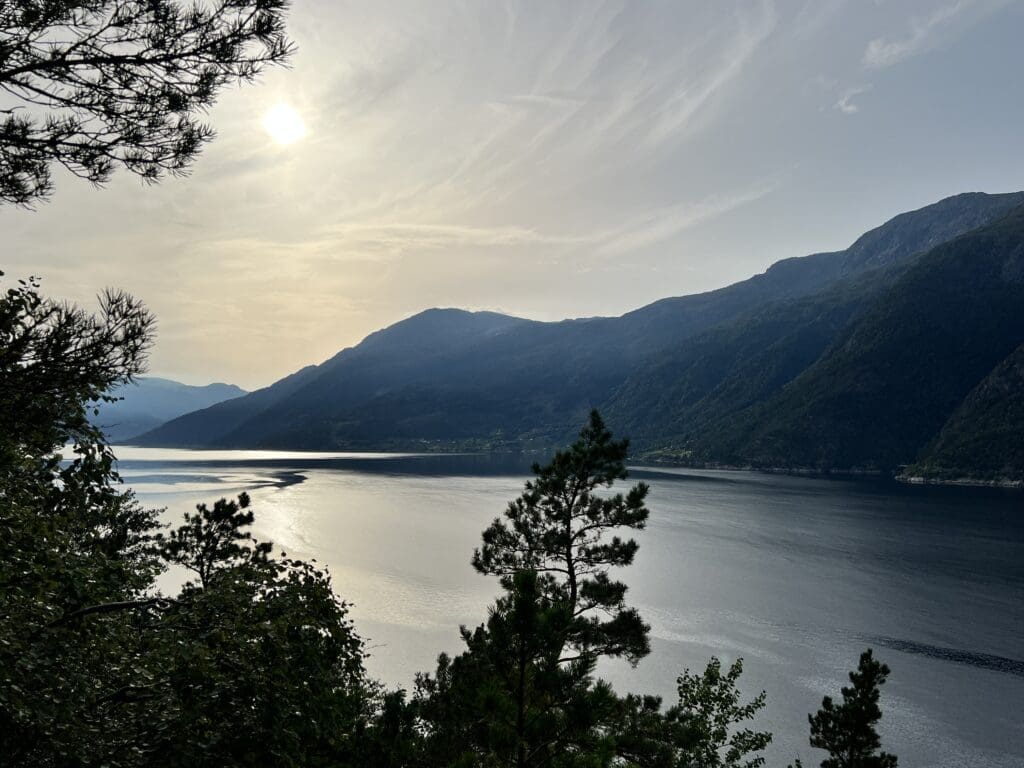
A day trip to the Hardangerfjord, the second-largest fjord in Norway, presents the opportunity to witness the country’s stunning natural beauty, including waterfalls, glaciers, and idyllic orchards.
Spring and early summer are particularly beautiful when the fruit trees are in bloom. Various excursions offer experiences such as cider tasting at local farms, hiking trails with views of the fjord, and visits to the Vøringsfossen waterfall, one of Norway’s most famous waterfalls.
Mount Ulriken
For those who prefer to stay closer to Bergen, a trip to Mount Ulriken—the highest of Bergen’s seven mountains—offers spectacular views of the city and beyond.
The Ulriken cable car takes you to the top, where you can enjoy hiking trails, a zipline adventure, or simply relax at the mountaintop restaurant. It’s a perfect half-day trip for nature lovers and adventure seekers alike.
Rosendal
The small village of Rosendal is about a 2-hour boat trip from Bergen and is home to the Barony Rosendal, a historic estate with beautiful gardens and Norway’s smallest castle.
Rosendal is surrounded by majestic mountains, waterfalls, and glaciers, including the Folgefonna Glacier, offering a tranquil escape into nature with a touch of history.
Sognefjord
The Sognefjord, the longest and deepest fjord in Norway, is accessible via a scenic journey from Bergen. Various tours offer cruises on the fjord, where you can enjoy the stunning landscape of steep mountains and picturesque villages.
Some excursions include activities like kayaking, hiking, or visits to the Norwegian Glacier Museum.
Øygarden
For a cultural and scenic day trip, head to the coastal municipality of Øygarden, located just west of Bergen. This area is known for its rugged coastline, traditional fishing communities, and beautiful lighthouses. It’s an excellent spot for bird watching, fishing, and exploring coastal trails.
And That’s A Wrap!
In conclusion, Bergen, often hailed as the gateway to the fjords, covers the essence of Norway’s majestic landscapes and rich cultural heritage. This historic city not only serves as a living museum with architectural relics from its Hanseatic past but also vibrates with modern cultural energy and culinary delights.
Bergen offers an immersive experience for every visitor. It stands as a testament to Norway’s enduring allure, marrying its deep historical roots with a lively present, making it a must-visit for those who cherish both natural beauty and cultural intrigue.

Jack Baumann
President of Guidester
Jack Baumann has lived and traveled throughout Europe for over 15 years, creating Guidester in 2014. Over the years Guidester has developed into a unique travel concierge and tour company helping travelers make the most of their trip to Europe.
The Ultimate Pre-Travel Checklist
Download ‘10 Crucial Things To Do Before Traveling Abroad’ to avoid mistakes and ensure a smooth trip; adapters and electronics, packing tips, foreign currency, phone plans, and more!

